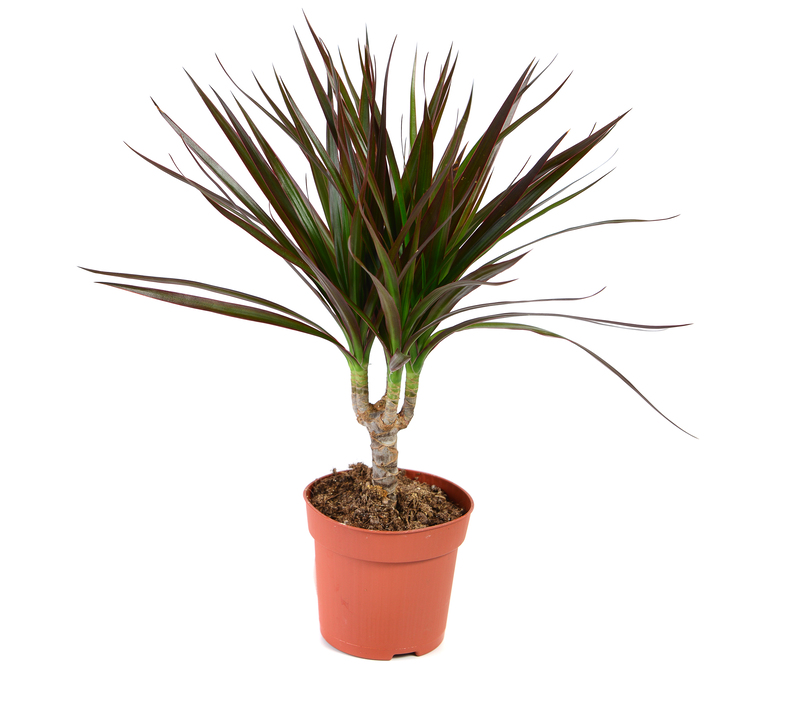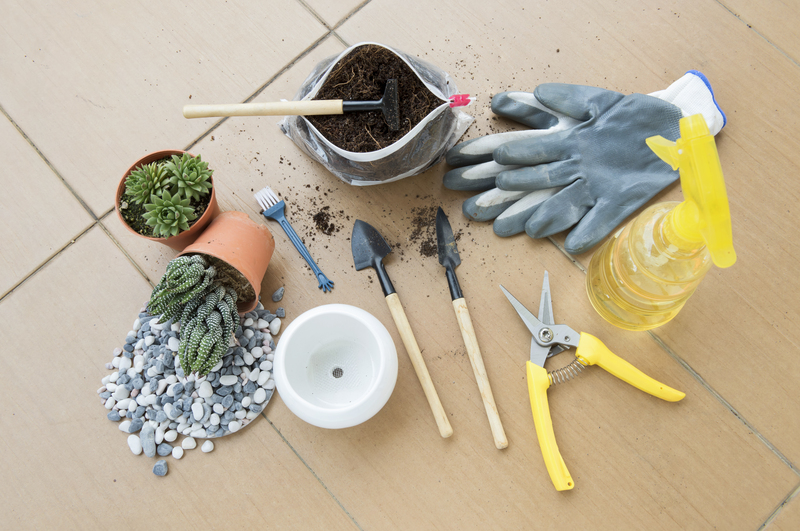Enriching Your Garden with Pet-Friendly Features
Posted on 02/07/2025
Enriching Your Garden with Pet-Friendly Features: A Comprehensive Guide
Gardening enthusiasts who are also pet lovers know the special challenges that come with creating a vibrant, flourishing outdoor space that's safe and enjoyable for their furry companions. Enriching your garden with pet-friendly features not only enhances your landscape, but also promotes the well-being of your pets and encourages positive, engaging interactions with nature. Whether you have playful pups, curious cats, or gentle rabbits, this comprehensive guide will help you transform your backyard into a haven for all family members--two-legged and four-legged alike.
Why Create a Pet-Friendly Garden?
A garden is more than just a collection of plants--it's a personal sanctuary, a place for relaxation, outdoor play, and meaningful connection. Designing a pet-friendly garden ensures your furry friends can safely explore, exercise, and unwind. Here are some key reasons to consider integrating pet-friendly features in your garden:
- Safety: Protect pets from toxic plants, harmful chemicals, and garden hazards.
- Health & Exercise: Encourage active play and movement, which are essential for your pet's physical and mental well-being.
- Stimulation: Provide a sensory-rich environment filled with sights, smells, and textures to keep pets engaged and entertained.
- Bonds: Strengthen your relationship through shared time in an outdoor space designed for both of you.
- Aesthetic Value: Incorporate visually appealing, functional elements that contribute to your overall landscape design.

Understanding Your Pet's Unique Needs
Before choosing features and plants, it's crucial to consider your pet's species, size, personality, and habits. Dogs, for example, may love to dig or run, while cats prefer climbing and observing from safe perches. Rabbits enjoy munching on greenery and finding shady spots to relax.
- Dogs: Need secure fences, open spaces, and shady rest areas.
- Cats: Will appreciate vertical elements, sheltered hiding spots, and safe pathways.
- Rabbits & Other Small Pets: Require barrier protection, nibble-safe plants, and cool areas to shelter.
Customizing your garden layout to align with your pets' instincts leads to a happier, healthier outdoor experience for everyone.
Essential Pet-Friendly Features for Gardens
1. Safe Boundary Fencing
A secure boundary is the cornerstone of any pet-friendly landscaping project. The fence should keep pets in--and uninvited wildlife out--while complementing your garden's aesthetics.
- For dogs: Choose fencing at least 1.5 meters high (or higher for larger breeds) with no gaps underneath or between slats.
- For cats: Consider cat-proof fencing or roller bars at the top to prevent climbing escapes.
- For rabbits & small animals: Opt for fine mesh buried at least 30cm below ground to prevent digging escapes and deter predators.
2. Toxin-Free Plants and Mulch
Not all plants are created equal when it comes to pet safety in the garden. Do your research to avoid species that are toxic to animals, as even small amounts can harm or sicken pets.
Popular pet-safe choices include:
- Marigolds
- Sunflowers
- Camellias
- Lavender (in moderation)
- Basil, Rosemary, and Sage
- Blueberries and Strawberries
Avoid common toxic plants like lilies, daffodils, foxgloves, and azaleas. When using mulch, steer clear of cocoa mulch (toxic to dogs), instead choosing wood chips or stone. Check labels and avoid chemical herbicides and fertilizers.
3. Comfortable Shade & Shelter
Animals are susceptible to sunburn and overheating. Incorporate natural or man-made shade features to keep your pets cool and comfortable:
- Plant broad-leafed trees or shrubs for dappled shade
- Add pergolas, gazebos, or awnings
- Install pet shelters or beds in quiet, shaded corners
4. Paths and Digging Zones
Help channel high-energy play and digging instincts away from delicate flowers by designing:
- Mulched or stone walkways--durable and gentle on paws
- Dedicated digging spots filled with sand or soft soil--for eventful canine or rabbit excavations
- Mazes or tunnels for mental stimulation and safe exploring
5. Pools and Water Features
Access to fresh water is essential for all animals. Consider the following pet-friendly options to add fun and tranquility to your garden:
- Shallow, spill-proof pet bowls
- Gently sloping ponds or streams for supervised play
- Pet splash pads and dog wading pools
Safety Tip: Ensure any water feature is shallow or has escape routes so pets can't become trapped.
6. Sensory Gardens for Pets
Create a sensory garden zone to enrich your pet's life with new tastes, smells, and textures.
- Catnip, catmint, and cat grass for feline visitors
- Dog-friendly herbs such as parsley and mint
- Varied surfaces: grass, sand, bark, and stepping stones
- Wind chimes, water burbles, and fragrant flowers for multisensory delight
Let your pet lead the exploration--sometimes, the *unexpected joys* are the best kind.
7. Safe Lighting and Visibility
A well-lit outdoor area increases night-time safety for both pets and humans. Install energy-efficient solar or LED lights along walkways and at entrances, avoiding glass or breakable fixtures at pet level.
8. Hideaways and Lookout Points
Animals love retreating to cozy spots or perching in elevated areas to observe their surroundings. Integrate thoughtful features such as:
- Timber benches or raised beds with crawl space beneath
- Outdoor pet houses or tunnels
- Cat trees and secured shelving for climbing felines
Pet-Friendly Plants: A Quick Reference List
Here's a handy selection of non-toxic plants that are generally safe for both cats and dogs:
- Snapdragons (Antirrhinum majus)
- Spider Plant (Chlorophytum comosum)
- Boston Fern (Nephrolepis exaltata)
- Polka Dot Plant (Hypoestes phyllostachya)
- Areca Palm (Dypsis lutescens)
- Lemon Balm, Rosemary, Thyme
- Blueberry and Strawberry bushes
Be sure to regularly consult your local vet or trusted plant reference for updates, as some pets may have unique sensitivities.
Pet-Proofing Garden Hazards
To truly make your garden safe for pets, it's vital to be vigilant about potential threats. Pet-proofing steps should include:
- Secure compost bins (decaying food can be toxic!)
- Check for sharp tools or objects
- Store gardening chemicals and fertilizers out of reach
- Regularly inspect fences for escape routes
- Keep gates latched
- Protect pet paws from hot paving in summer
Designing for Play, Comfort, and Interaction
Pet gardens can be both stylish and functional. Here are some creative ways to enrich the garden experience for pets and owners alike:
- Install agility or play equipment such as tunnels, hoops, or ramps for dogs
- Set up a window perch or a "catio" (enclosed cat patio) for safe feline exploration
- Scatter interactive toys and treat puzzles to occupy inquisitive minds
- Add comfortable loungers or swinging hammocks for shared relaxation
- Designate a picnic or reading area where you and your pet can unwind together
Creating Year-Round Enjoyment
Enriching your garden for pets does not end with the summer sun. With some thoughtful additions, your garden can provide interest and comfort throughout all four seasons:
- Plant winter evergreens and cold-hardy ground covers
- Provide insulated shelters and waterproof beds for chilly months
- Grow spring bulbs and summer annuals in pet-safe varieties
- Include sheltered feeding stations for year-round outdoor pet meals
Frequently Asked Questions about Pet-Friendly Landscaping
What are some common toxic plants I should avoid?
- Lilies (highly toxic to cats)
- Oleander
- Yew
- Azalea/Rhododendron
- Daffodil and Tulip bulbs
- Foxglove
- Cocoa mulch (contains theobromine, toxic to dogs)
How can I stop my dog from destroying my garden beds?
Provide plenty of alternatives: create a designated digging area, reinforce boundaries with strong fencing, use deterrents like thorny shrubs (non-toxic), and invest time in training. Giving your dog mental stimulation and adequate exercise helps reduce destructive behavior.
Can I use fertilizers and pesticides in a pet-friendly garden?
Always opt for organic, pet-safe options. Avoid chemical pesticides, herbicides, and rodenticides, which can be fatal if ingested. Look for products labeled as "pet-safe," and keep pets away from treated areas until they are safe for return.

Bringing It All Together: Design for Pets and People
An enriched, pet-friendly garden is a testament to the fact that you don't have to sacrifice style for safety. By thoughtfully blending non-toxic plants, engaging landscape features, and secure boundaries, you can cultivate a garden that blooms with life, laughter, and love.
Whether you have acres of land or a snug urban yard, enriching your outdoor space with pet-friendly features is the ultimate gift for both your family and your pets. Watch as your pets thrive in a garden that's as full of excitement and discovery as it is tranquil and restorative--a true paradise for every member of the pack or pride.
Conclusion: Embark on Your Pet-Friendly Gardening Journey Today!
Creating a pet-friendly garden isn't just about ticking boxes for safety--it's about enriching the lives of everyone who spends time there. From choosing non-toxic plants and designing playful landscapes to adding shaded retreats and stimulating sensory corners, each decision brings you one step closer to an outdoor space that supports health, happiness, and connection.
Start by assessing your own garden's needs and your pets' personalities. Consult with horticulturists, landscape designers, or pet behaviorists if you want to elevate your plans. Above all, let your garden be a place where paws, whiskers, and wagging tails are always welcome.
Ready to transform your backyard? It's time to roll up your sleeves, let your imagination run wild, and create a haven where both plants and pets flourish harmoniously. Happy gardening!



